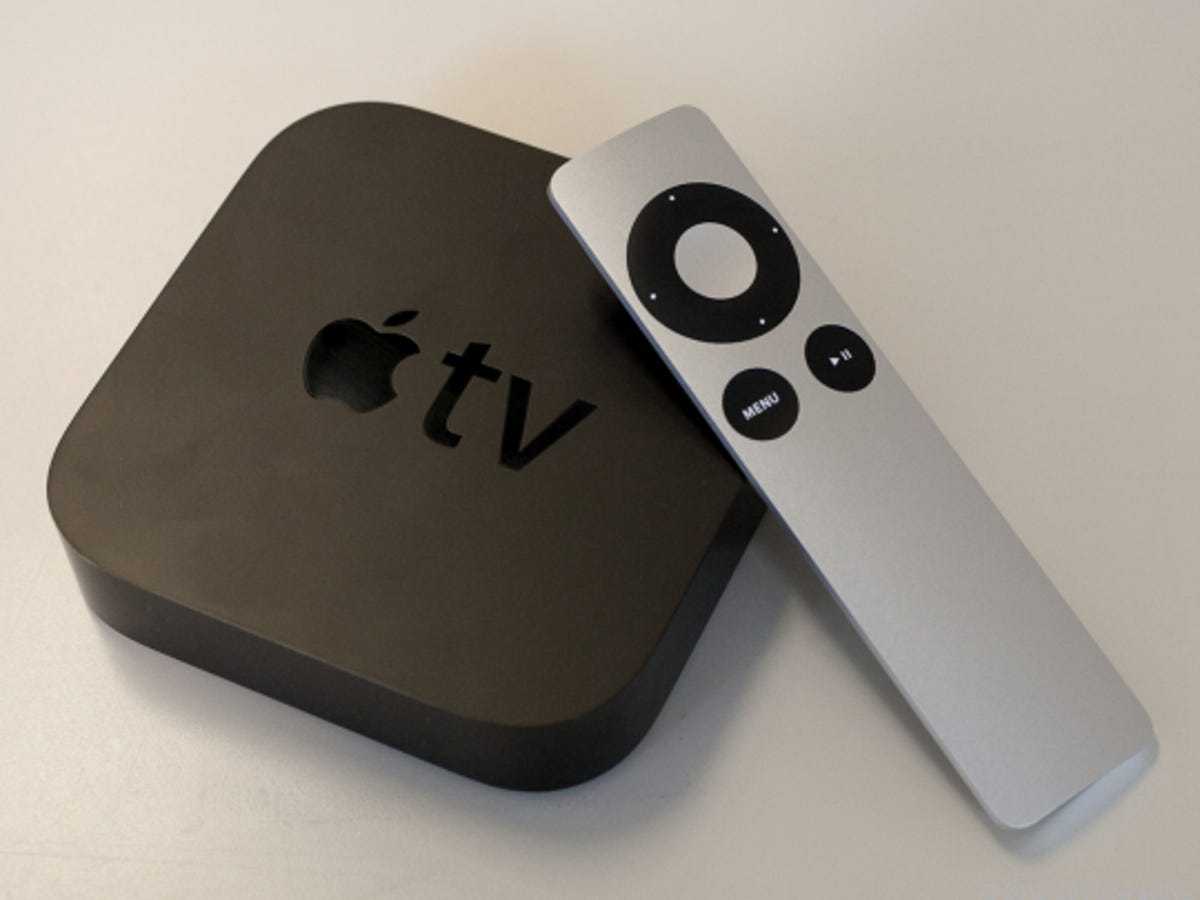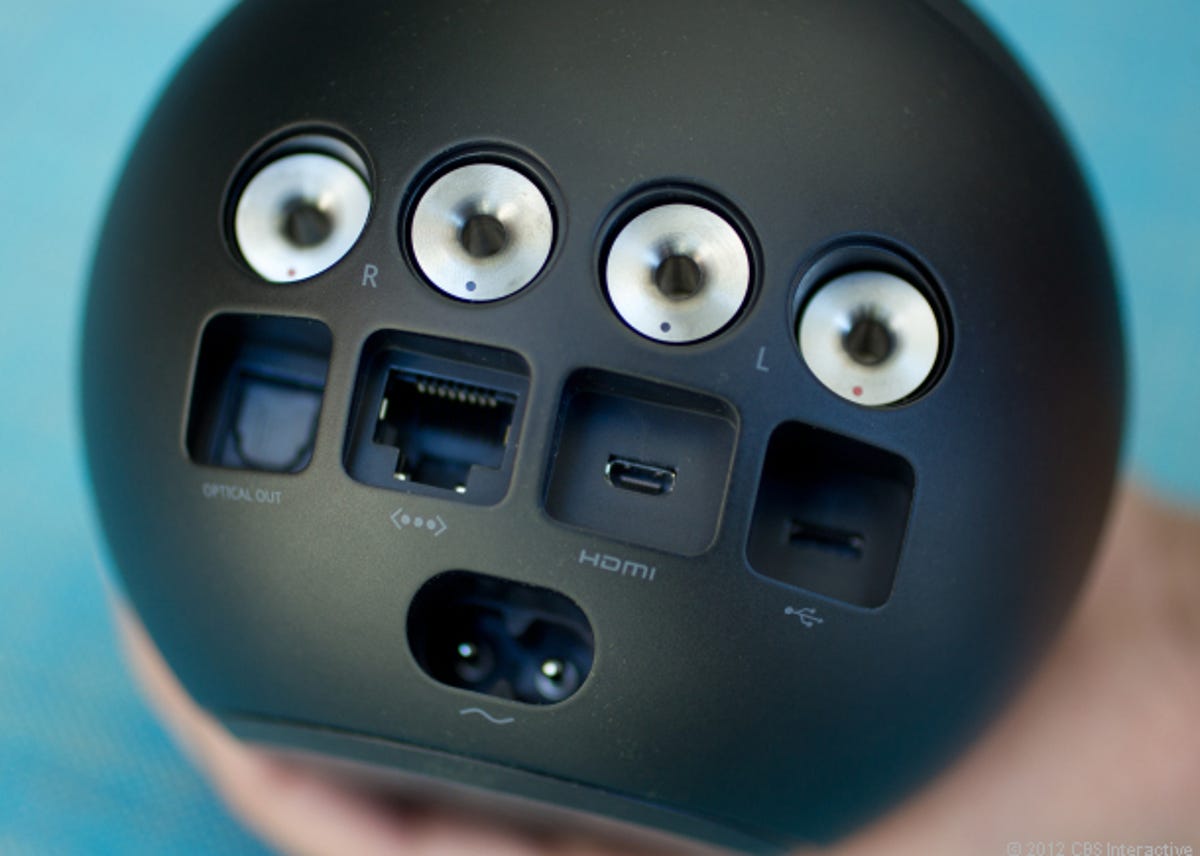There is a battle going on for control of your living room, and while there are many combatants, there’s yet to be a clear victor. Thanks to a handful of so-called set-top boxes, Internet-delivered video and audio are becoming a big source — if not the main source — of TV entertainment for a growing number of people.
Nearly all Blu-ray players and game consoles (not to mention TVs themselves) now double as Web-centric entertainment devices. In the market for “pure” streaming boxes, two products have dominated to date: the Apple TV ($100) and the Roku box ($50 to $100, depending on features). Now a new player has thrown its hat into the ring, as Google has finally released its first living-room “AV system,” the Nexus Q.
But at $300, the Google Nexus Q is expensive, far more expensive than its Apple and Roku competitors. Does the Nexus Q deliver something more for that hefty price? And which of these should you be spending your money on? Let’s take a look at each.
Roku HD ($60)


Sarah Tew/CNET
The Roku HD is the simplest — and most affordable — of the devices here. (We’re highlighting the $60 Roku HD instead of the $50 Roku LT, since they’re all but identical, and the LT rarely seems to be in stock.) It’s a pure streaming box that offers hundreds of online channels, aka providers, including Netflix, Hulu Plus, Pandora, and Amazon Instant Video.
Those with treasure troves of digital files on their PCs or network servers won’t be able to access them with DLNA functionality, but the Roku now offers the next best thing: support for the free Plex media server software, which works just about as well.
Roku uses a dedicated remote control (or Android and iOS smartphone apps, if you prefer) to operate the minimalistic interface, a series of onscreen tiles. Sticking with the KISS aesthetic, it’s wireless only; step up to the $100 Roku XS if you need Ethernet. Roku also sets itself apart from Apple TV and the Nexus Q by offering support for older analog TVs in addition to HDMI support for newer HDTVs as well.
If all you want is Netflix (and the option for a zillion other channels) and you want to pay the lowest price possible, then the Roku is hands-down the best device to get. It’s the easiest way to add “smart” features to your television, and with only one cable to connect, it’s a snap to install.
Upside: Cheap as chips. Easy to set up. Compact. Plenty of online services, including many you won’t find on the Apple TV.
Downside: The smartphone app is limited, with no option for handheld audio control when TV is off. No YouTube, Spotify, or Vudu channels.
Read the CNET review of the Roku HD
Apple TV ($100)


Sarah Tew/CNET
Now in its third revision, the Apple TV is arguably the most approachable streaming box, and — if you’re a Mac, iPhone, or iPad user — more flexible than either the Roku or the Nexus Q.
On the surface, the Apple TV has only a handful of channels — nearly all of them, except YouTube and iTunes, also available via Roku. But if you’ve already invested in a lot of iTunes content like movies and TV shows, you’ll find most of it instantly available via streaming from Apple’s iCloud. Apple music fans can likewise access their iCloud-based music collections via iTunes Match, for $25 a year.
Even without iTunes Match, the Apple TV is a great corollary to iTunes. While the Nexus Q won’t enable you to stream music contained on your phone or network, the Apple TV does. Many people have amassed sizable iTunes libraries, and of the three devices here, the Apple TV is the only one that will let you play them. Sure, you can upload content to your Google Music account, but have you ever tried that? It takes dedication.
But the biggest boon to the Apple TV is AirPlay. It’s what DLNA should have been: you can easily stream media from a source (Mac, iPad, iPod Touch, iPhone) to the Apple TV with just the push of a button. That includes many — though not all — audio and video apps. So, that means applications like Spotify and Hulu Plus don’t need to be rewritten for the Apple TV, you just stream them straight from your phone. (Alas, some apps, notably HBO Go, don’t support AirPlay video mirroring from iOS devices.)
We expect Apple TV to get even better with the imminent arrival of OS X Mountain Lion’s AirPlay screen-mirroring feature, which will allow full-screen video — not just the current iTunes audio option — to be mirrored straight to your Apple TV.
Upside: Inexpensive. Seamless iOS integration. AirPlay means most iOS media apps support TV playback.
Downside: Closed ecosystem. Limited format support. Limited streaming services. No app store (yet). Doesn’t work with older, non-HDTVs.
Read the CNET review of the Apple TV
Google Nexus Q ($300)


Sarah Tew/CNET
The Google Nexus Q is quite a unique device in that it’s one part Apple AirPlay and one part Sonos Connect: Amp — sort of. Rather than stream content from your Android phone or tablet a la AirPlay, it uses those handheld devices as a remote, streaming your Google Play videos, music, or YouTube videos directly from Google’s servers.
As niche products go, this is pretty niche: the only thing you can stream is Google properties, and the only controllers you can use are Google Android devices. Apple iPhone and iPad users are out of luck. You can’t stream audio, video, or photos from your networked PCs, either. I don’t think anyone will be queuing for this one (though I find lining up for a mass-market product a strange idea anyway).
What sets the Nexus Q apart from other set-top boxes is its spherical design. While the Roku and Apple are essentially hockey pucks, the Nexus Q is an attention seeker. The palm-size black orb has a colored ring that pulses in time to the music. No hiding this down the back of your TV!
It also has an onboard amp; the built-in 25 watts of stereo power allow you to connect a pair of speakers directly to the Q.
Connections are plentiful. In addition to the speaker outputs it has HDMI, Ethernet, and optical digital audio. Unfortunately, because of the size and shape of the device, the ports are very close together, and plugging and unplugging anything but speakers can be problematic.
Upside: Polished design. Simple to use.
Downside: Only works on Android. Google streaming services only — no Netflix, Pandora, or any other non-Google app. No DLNA streaming of local content. Very expensive, compared with competing devices.
Read the CNET review of the Nexus Q
Other alternatives
As I mentioned above, the Nexus Q, with its onboard amplifier, is very similar to the Sonos Connect: Amp, the main difference between them being that the Sonos is for music only. In terms of ease of use, the Sonos ecosystem is one of the simplest and straightforward I’ve ever encountered. Yes, the Connect: Amp is expensive at $499, but this is a very slick product with plenty more flexibility than the Nexus Q, and it’s just as easy to set up. You can also opt for less-expensive Sonos products with built-in speakers: the $300 Play:3 and $400 Play:5.
The WD TV Live is also $100, and although it’s the most flexible of any media streamer I’ve ever used, it’s also not as easy to use. You can’t browse media collections on your phone, and though it has apps like Spotify, they’re not as fully formed as on a competitor such as the …
Logitech Squeezebox Touch. While it’s the densest in terms of functionality and potential complexity, it’s also my favorite music streamer. It’s 3 years old and doesn’t look like it’s going to be replaced anytime soon.
Which should you buy?


Sarah Tew/CNET
If you’ve read through this article, and haven’t just skipped to the end, it should be pretty clear that Apple TV and Roku HD are some of the best streamers on the market. By and large, the Apple TV does everything that the Nexus Q does — except amplifying a pair of speakers — and a whole lot more. Meanwhile, a Roku is great if you just want to watch Netflix, Hulu Plus, HBO Go, or one of the other services the Apple TV doesn’t offer.
With two highly polished products for it to compete with, it just makes me wonder why Google released the Nexus Q now. There have been rumors for several months about its existence, but surely no one has been clamoring for its release — particularly after the public failure of the Logitech Revue.
If Google had spent another six months adding services to what appears to be a great piece of hardware, the Nexus Q might have had a better chance. It seems Google is not good at waiting until Christmas to open its presents.
Related stories
- Got a Streaming Device? You Need to Change These Settings ASAP
- Best Soundbars for 2022
- Best TV for 2022: Top 10 Smart TVs From Budget to High-End
Like many Google products to this point, the Google Nexus Q feels unfinished. It’s a familiar tune: the company arguably released Google TV two years too early, and it’s a product still struggling for a foothold 18 months after its release. Additionally, blocking iOS users and other streaming services at this point seems like a huge misstep. Perhaps the company will see the error of its ways before it’s too late.
While there are millions of people who are tied in to Apple’s ecosystem, there aren’t as many people who are as committed to Google, despite the proliferation of Android devices. If you wanted an alternative that is handset-agnostic, there’s always Roku — and you can buy five or six of them for the price of one Nexus Q.
Both Apple and Google have made their shares of mistakes, and while Apple tends to shrug them off, Google seems to revel in its own. In the words of Google CEO Eric Schmidt, “We celebrate our failures..” Absent a major software update in the future, the Google Nexus Q has the potential to be one of the company’s biggest failures yet.


Now playing:
Watch this:
Google Nexus Q streaming-media player
1:46




